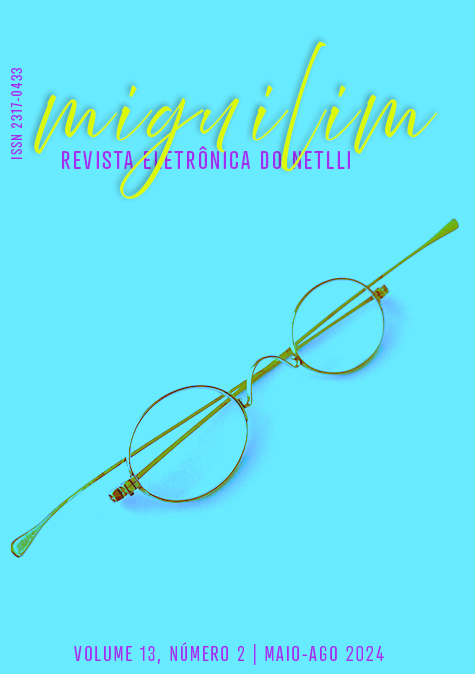The earth and the graves: metaphors of memory in Voices from Chernobyl, by Svetlana Aleksiévitch
DOI:
https://doi.org/10.47295/mgren.v13i2.1510Keywords:
Testimony literature, Metaphor, Memory, Russian literature, Contemporary literatureAbstract
The Belarusian writer Svetlana Aleksiévitch is well known for bringing together in her books collections of oral reports from anonymous witnesses of historical landmarks in the Soviet Union. Critically opposing the official historiography, which privileges great characters and events, her work highlights memories of ordinary people who had their lives marked by these events. To convey these, the author's voice rarely appears textually in her books, and so the voices of the witnesses tell their own stories. However, for these isolated stories to gain the collective aspect necessary for the transmission of testimony, the author uses strategies for selecting and organizing the oral reports. In Voices from Chernobyl, one of these strategies is the repetition of certain images in different testimonies, such as the earth and the grave. As Aleida Assmann (2021) states, the earth and the grave are some of the many metaphors of memory, images that have become essential for the theoretical and conceptual understanding of remembrance. Understanding that memory and forgetting are central concerns in Aleksiévitch's work, I believe that the intentional repetition of these images becomes a way for the author to connect particular stories to a collective imagination about recurrence. Therefore, this work aims to analyze how the different appearances of these images in Voices of Chernobyl can be related to conceptual thinking, based on a brief archeology of the earth and the grave as metaphors for memory.
References
ALEKSIÉVITCH, Svetlana. Vozes de Tchernóbil: A história oral do desastre nuclear. Trad.: Sonia Branco. 10.ed. São Paulo: Companhia das Letras, 2020.
ASSMANN, Aleida. Espaços da recordação: Formas e transformações da memória cultural. Trad.: Paulo Soethe. 3.ed. São Paulo: Editora Unicamp, 2021.
BENJAMIN, Walter. Magia e técnica, arte e política: ensaio sobre literatura e história da cultura. Trad.: Sérgio Paulo Rouanet. 8.ed. São Paulo: Editora Brasiliense, 2012.
BENJAMIN, Walter. Rua de mão única: infância berlinense. Trad.: João Barrento. 1.ed. Belo Horizonte: Autêntica, 2013.
BORGES, Jorge Luis. Esse ofício do verso. Trad.: José Marcos Macedo. 2.ed. São Paulo: Companhia das letras, 2019.
DIDI-HUBERMAN, Georges. Imagens apesar de tudo. Trad.: Vanessa Brito e João Pedro Cachopo. 1.ed. São Paulo: Editora 34, 2020.
GAGNEBIN, Jeanne Marie. Lembrar escrever esquecer. 1.ed. São Paulo, Editora 34, 2006.
LEVI, Primo. É isto um homem?. Trad.: Luigi del Re. Rio de Janeiro: Editora Rocco, 2013.
LEVI, Primo. Os afogados e os sobreviventes: os delitos, os castigos, as penas, as impunidades. Trad. Luiz Sérgio Henriques. Rio de Janeiro: Paz e Terra, 1990.
PLOKHY, Serhii. Chernobyl: The History of a Nuclear Catastrophe. 1.ed. Basic Books, 2018.
SELIGMAN-Silva, Márcio. Narrar o trauma: a questão dos testemunhos de catástrofes históricas. Psi.Clin., Rio de Janeiro, Vol.20, n.1, p.65-82, 2008.
SELIGMAN-Silva, Márcio. O local do testemunho. Metamorfoses-Revista de Estudos Literários Luso-AfroBrasileiros, v. 10, n. 2, p. 176-203, 2010.
Downloads
Published
Issue
Section
License
Copyright (c) 2024 Raphael Domingos de Ávila

This work is licensed under a Creative Commons Attribution 4.0 International License.
The copyright belongs to the authors of the work.











